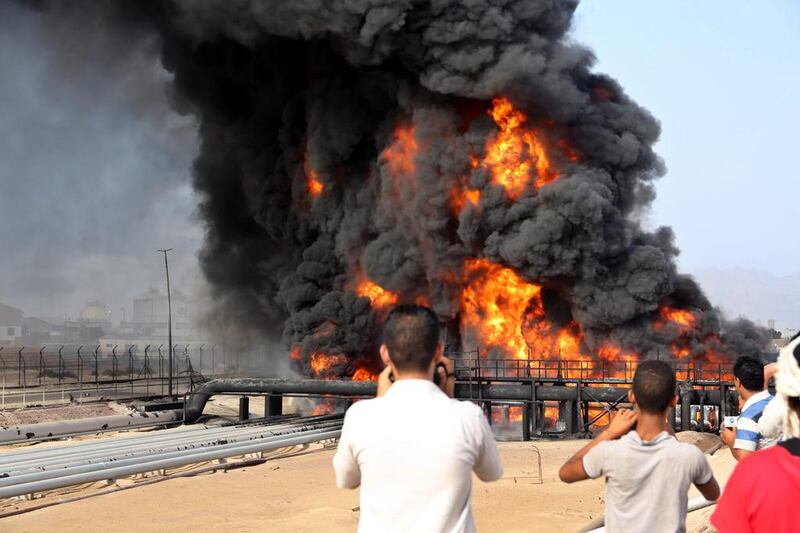Political developments in Yemen have long had an impact on its oil, gas and water production, three essential commodities that have seesawed with the country's ups and downs.
The recent killing of former president Ali Abdullah Saleh has brought back the problems facing these industries to the fore.
Saleh emerged as leader of the Yemen Arab Republic (North Yemen) in 1978. The Marxist People’s Democratic Republic (South Yemen) was then a separate country. For many years, episodic oil exploration had led to no discoveries, in sharp contrast to Yemen’s Arabian Peninsula neighbours. But in 1984, Hunt Oil, a privately-owned US company, found oil in the Marib Basin.
The CIA’s initial assessment that Yemen could produce 200,000 barrels per day by the end of the 1980s proved quite accurate. Hunt partnered with Exxon and a consortium of South Korean companies, and built a pipeline running west to Ras Isa north of Hodeidah on the Red Sea.
The discovery was welcome for the US, bolstering a pro-western attitude in Sanaa against the Soviet-backed south, and providing a modest extra source of non-Opec oil.
In May 1990, with Soviet support for the south fading as the USSR collapsed, the two parts of Yemen unified under Saleh's leadership. In September of that year, Nexen, formerly Canadian Occidental, found oil in the Masila Basin located in the Shabwa province, in the neutral zone between the former North and South Yemen, establishing Yemen's second producing area. A brief civil war in 1994 saw Saleh reassert control over the south after it had attempted to secede under his former deputy Ali Salim Al Beidh.
Yemen’s oil experience was not the same as its neighbours’. With very different geology, and much smaller fields even than Oman’s, it found oil later. Most of its production came during the 1990s when prices were low, and its relatively large population meant that oil earnings per person were small.
Nevertheless, production rose sharply on the back of the Hunt, Nexen and other companies' discoveries, reaching a peak of 457,000 barrels per day in 2002, about half of Oman's level. From there on, despite some ingenious new exploration campaigns, it declined to 306,000 barrels per day in 2010, the last year before the revolution that initially toppled Saleh. High oil prices actually kept export revenues rising for a while after 2002, but they fell from roughly US$6.6 billion in 2008 to $4.6bn in 2010.
Aware that oil resources would dry up, the Yemeni government had begun engaging Hunt, Total and partners in 1995 to build a liquefied natural gas export plant. Yemen LNG finally came into operation in 2009, a remarkable landmark investment of $4bn for a poor and unstable country. But although the plant at Balhaf on the southern coast initially operated well, it ran into trouble with repeated bombings of the pipeline bringing its gas from the inland fields.
Earnings from LNG were, in any case, not enough to make up for the decline in oil. Even after Saleh's ousting in 2011 and the 2013 plan for a federal system, there was uncertainty regarding the distribution of natural resources, particularly oil and gas. And even without revolution and civil war, Yemen was heading for a near-insoluble water crisis because of qat.
Until the early 1970s, qat chewing was largely a pastime of a wealthy urban elite, but the development of roads following the influx of oil remittances from Yemeni migrant workers allowed it to be brought fresh, in quantity, from previously remote villages.
Qat is a lucrative crop, but a water-hungry one – more than coffee, an alternative for farmers. Even before the conflict, irrigation was wasteful and dams were not maintained properly. Wells in Sanaa now go down as much as 1000 metres, with the water table drying up. Diesel has long been subsidised, making it cheap to run pumps, but the conflict has now interrupted supplies. Black-market diesel prices have now reached $5 per litre (compared to the official UAE price of $0.60 per litre).
Oil production continues at reduced levels in relatively peaceful Marib, and may even have recovered a bit this year to around 40,000 barrels per day. After repairs to its pipeline, there are sporadic rumours of restarting the LNG plant.
But the industry is still a shadow of its past self. The Houthis may have eliminated Saleh, but the areas they control lack both the oil and water which have been critical to the country's economy.
Robin M. Mills is CEO of Qamar Energy, and author of The Myth of the Oil Crisis






